 Quadrangular stamp seal from the Indus Valley depicting a bull (l. 2.5 cm; w. 2.5 cm; th. 0.5 cm)
Quadrangular stamp seal from the Indus Valley depicting a bull (l. 2.5 cm; w. 2.5 cm; th. 0.5 cm)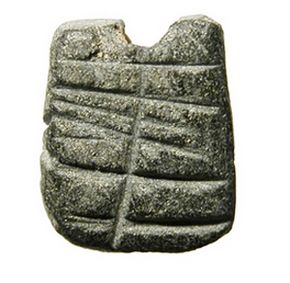 Iron age pendant from Salut (IMTO archive)
Iron age pendant from Salut (IMTO archive)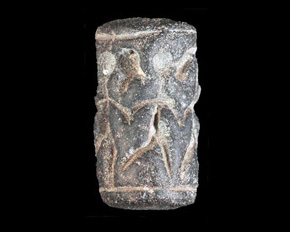 Cylinder seal in dark gray stone with men and astral symbol (diam. 1.3 cm; h. 2.3 cm)
Cylinder seal in dark gray stone with men and astral symbol (diam. 1.3 cm; h. 2.3 cm)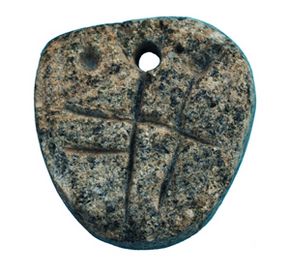 Iron age pendant from Salut (IMTO archive)
Iron age pendant from Salut (IMTO archive) Cylinder seal in dark green stone with a horned animal between two stylized trees ( diam. 1.2 cm; h. 2.3 cm)
Cylinder seal in dark green stone with a horned animal between two stylized trees ( diam. 1.2 cm; h. 2.3 cm)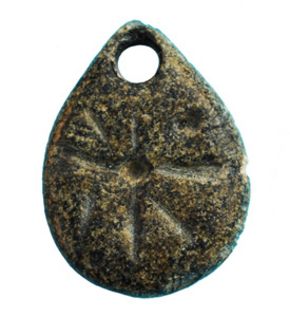 Teardrop seal pendant of dark gray stone (l. 3 cm; w. 2.2 cm; th. 0.7 cm)
Teardrop seal pendant of dark gray stone (l. 3 cm; w. 2.2 cm; th. 0.7 cm)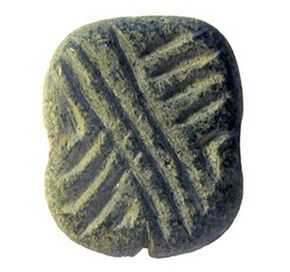 Seal pendant in dark gray stone with a pattern of incised lines (l. 1.9 cm; w. 1.6 cm; th. 0.7 cm)
Seal pendant in dark gray stone with a pattern of incised lines (l. 1.9 cm; w. 1.6 cm; th. 0.7 cm)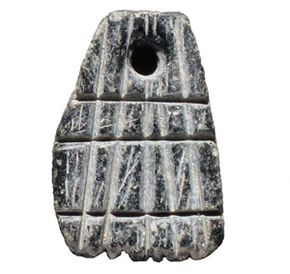 Iron age pendant (IMTO archive)
Iron age pendant (IMTO archive) Pyramid-shaped seal pendant in dark gray stone (l. 3 cm; w. 2.2 cm; th. 0.7 cm)
Pyramid-shaped seal pendant in dark gray stone (l. 3 cm; w. 2.2 cm; th. 0.7 cm)
This newly found Iron Age seal comes from an area to the north of the Salut hill whose investigation just began in November 2015. In all likelihood it has to be identified with part of the Iron Age settlement that was overlooked by "Husn" Salut - found at last!
